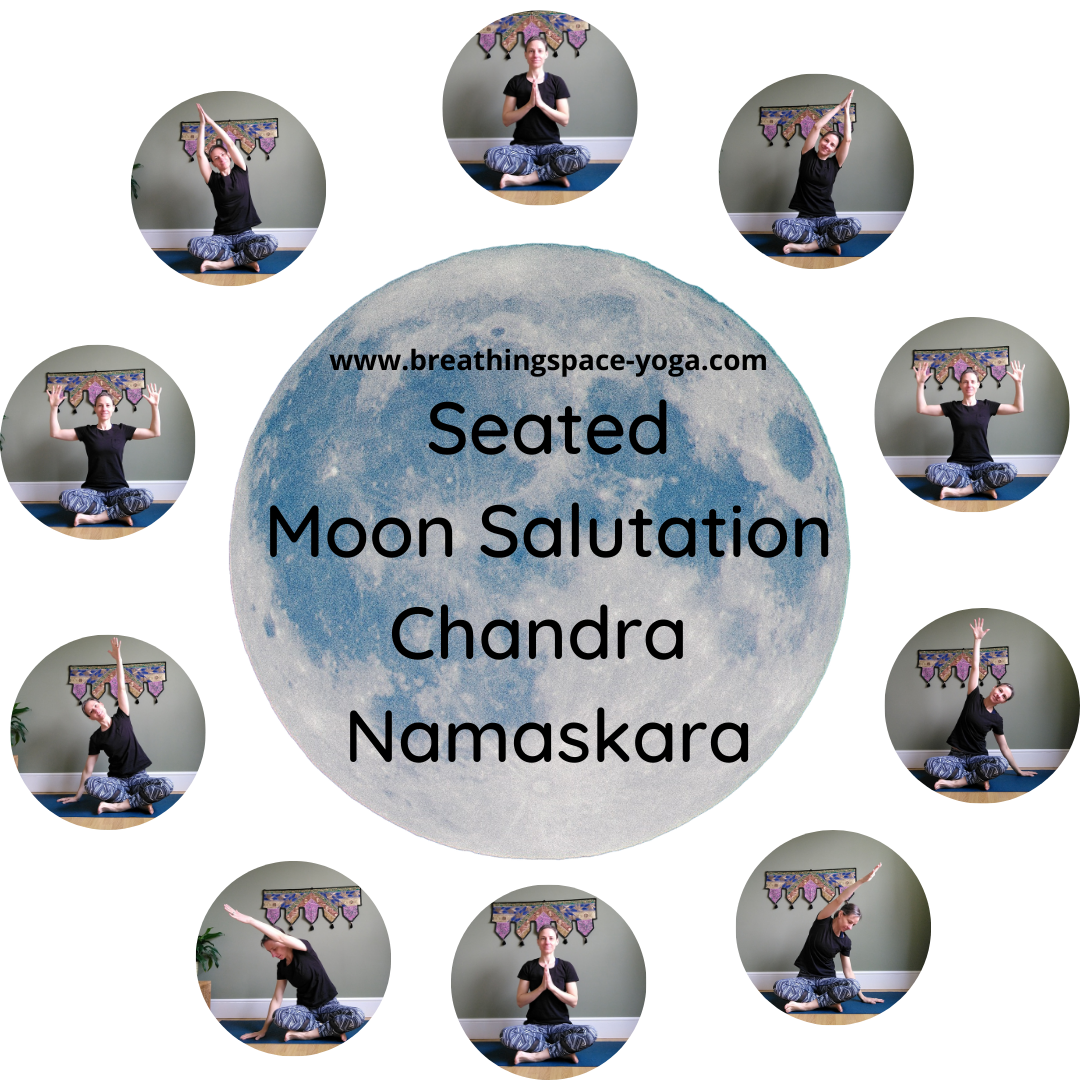Moon Salutation - 3 ways
The moon tells the sky
The sky tells the sea
The sea tells the tide
and the tide tells me
Lemn Sissay
I'm sure you've heard of the yoga Sun salutation. If you are a yoga student you've probably done a few of them in your yoga practice.
But have you heard of the moon salutation?
I knew there were moon celebrating sequences, but until recently I'd never done one. So when I was asked by a local festival to teach a yoga class under Luke Jerram's Moon installation https://my-moon.org/ I took the opportunity to research the moon salutation and the moon itself.
As with sun salutations, there are several versions. So I chose what seemed to be the most common one to teach to my students.
The moon salutation goes side to side along the long edge of your yoga mat, unlike the sun salutation which goes front to back along your mat. It is said to be a more calming sequence invoking the moon's power of rest, luminescence and release. The sun salutation of course can be invigorating, warming and strengthening.
The Ratri Suktum is part of a prayer sung by Brahma to Goddess Yoga Nidra. "It praises her moon-like qualities and radiant beauty and nurturing qualities. It is the radiance of the moon that brings nurturing and healing nectar." Tracee Stanley, Radiant Rest
Verse 10: "You are beauty and more beauty. You are most beautiful among all the saumya* things. You are Parameshwari, the Supreme Goddess beyond all the things near and far."
*pearl-like, moon-like, evoking qualities of purity, tranquillity and peace
Despite being more calming, the moon salutation is not a simple sequence. It has some strong poses within it and transitions side to side require a good deal of balance and placing of feet carefully to be steady.
As I prepped my classes I knew, as always, that adaptations to the salutation would be needed for lots of my students, and that working on the moon salutation step by step would mean everyone could add in more if they needed or take a more accessible route.
For example, not coming all the way forwards in parsvottonasana or skipping the squatting poses or keeping them higher and less deep. For all my classes, especially my gentle classes we worked on a seated version of the sequence both on the floor and a chair. So everyone can do a version of the moon salutation even if deep squats and asymmetric forward folds are not part of your practice.
I love making my classes accessible to all my students in this way. If you'd like to have a go here's a 40 min practice offering the three variations - and you can just repeat the seated version a couple of times if the standing version looks too much. Or if you want a stronger practice skip the seated versions and repeat the standing one a few times.
Let me know how you get on.
And here's a few fun facts I found out about the moon:
The Moon is Earth’s only natural satellite and the fifth largest moon in the solar system.
The Moon’s presence helps stabilize our planet’s wobble and moderate our climate.
The Moon’s distance from Earth is about 240,000 miles (385,000km).
The Moon has a very thin atmosphere called an exosphere.
The Moon’s surface is cratered and pitted from comet and asteroid impacts.


